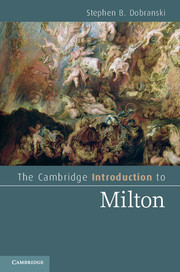Chapter 5 - Afterlife
Published online by Cambridge University Press: 05 January 2015
Summary
When toward the end of the eighteenth century the parish church of St. Giles, Cripplegate, was undergoing a general repair, parishioners requested that John Milton’s coffin be disinterred so that the exact location could be established and a monument erected to honor the parish’s most famous son. On the afternoon of Tuesday, 3 August 1790, after about five days of digging, workers unearthed a leaden coffin on the north side of the chancel beneath the common- councilmen’s pew. Based on the coffin’s position and apparent age, church officials concluded that the grave probably belonged to Milton, and the churchwarden John Coles ordered the ground to be closed.
Coles, however, must have had some nagging doubts or a morbid curiosity because the next morning he changed his mind. After reportedly keeping a “merry-meeting” at the home of a nearby tavern owner, Coles led a group of men back to the grave site, where one parishioner used a mallet and chisel to break the coffin’s lid. Reading Philip Neve’s contemporary account of what happened next, we may be reminded of “the rout,” as Milton describes it in Lycidas, “that made the hideous roar” and dismembered Orpheus (line 61). Neve himself calls it a “most sacrilegious scene.” Parishioners began rifling through the coffin’s remains and snatching up the corpse’s relics – teeth, a rib, and clumps of hair.
- Type
- Chapter
- Information
- The Cambridge Introduction to Milton , pp. 195 - 209Publisher: Cambridge University PressPrint publication year: 2012

